-
Car Reviews
- All reviews
- Midsize SUVs
- Small cars
- Utes
- Small SUVs
- Large SUVs
- Large cars
- Sports SUVs
- Sports cars
- Vans
Latest reviews
- Car News
-
Car Comparisons
Latest comparisons
- Chasing Deals
Japanese brand ditches its 1.9-litre diesel for a more economical and powerful 2.2-litre, but can it entice die-hard 3.0-litre buyers?
Poor old Isuzu. It’s been a true-blue Aussie sales success story this past decade, trading on our snowballing demand for utes and 4×4 seven-seaters. The D-Max one-tonner and MU-X SUV have done lovely business, so despite flogging just the two models, Isuzu’s firmly rooted as a top ten selling brand.
But strong headwinds this way come. Australia’s New Vehicle Efficiency Standard (NVES) punishes the most polluting vehicles with fines getting harsher with each new year, and diesel engines spewing out all that CO2 are the most targeted.
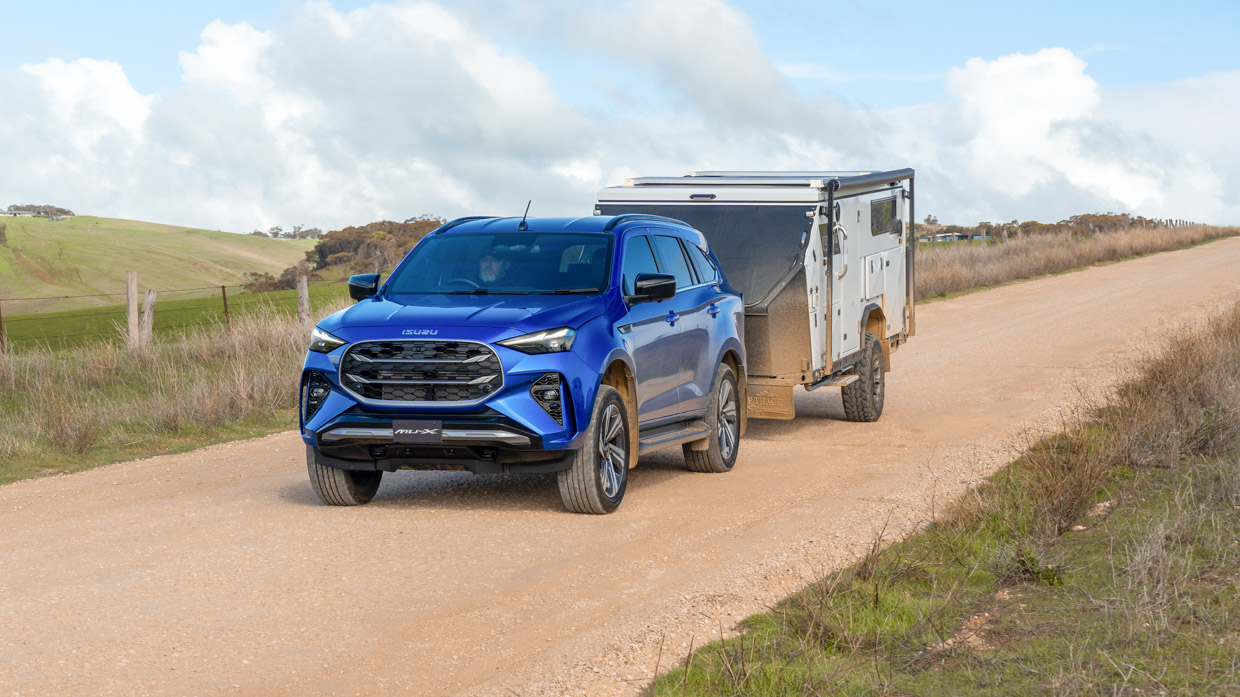
Commercial vehicles such as utes and ladder-frame SUVs towing over 3000kg (like the MU-X) enjoy slight concessions for now, but Isuzu’s at serious risk of being caught with its pants down.
If you offer only diesel engines and have no electrified models like hybrid, plug-in or EV to help write off your CO2 crimes (as rivals Toyota, Ford and BYD do), financial penalties will build, and there’ll be little choice but to pass that cost on to customers.
Isuzu’s action begins now. While the Japanese brand still has nothing to confirm on the electrified front (although its D-Max EV soon goes on sale in right-hand-drive UK), a new 2.2-litre diesel engine with an eight-speed auto gearbox for the D-Max and MU-X has arrived to lessen the NVES punishment. And that’s what we’re testing here.
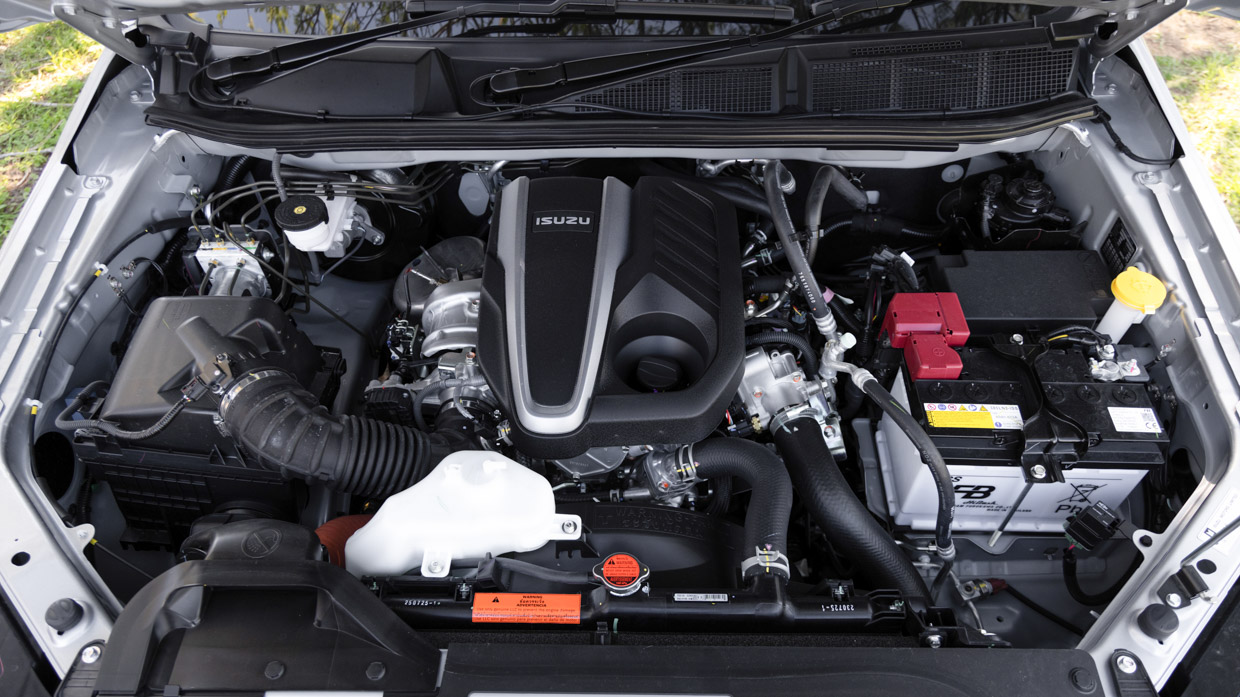
It’s incredibly important the market takes to this new diesel donk. Pollution fines are directly tied to CO2 g/km numbers, so the more Isuzu sells with lower numbers, the less its financial penalty.
Isuzu’s fleet-special 1.9-litre engine has been dumped to make way for this new 2.2-litre, which offers from 6.6L/100km economy and 174g/km in a 4×4 D-Max.
That old 1.9 gave 6.9L/100km and 180g/km so there are marginal gains there, but arguably just as important, this new engine boosts appeal as 2.2-litres sounds less weedy than a motor displacement starting with the number ‘1’.
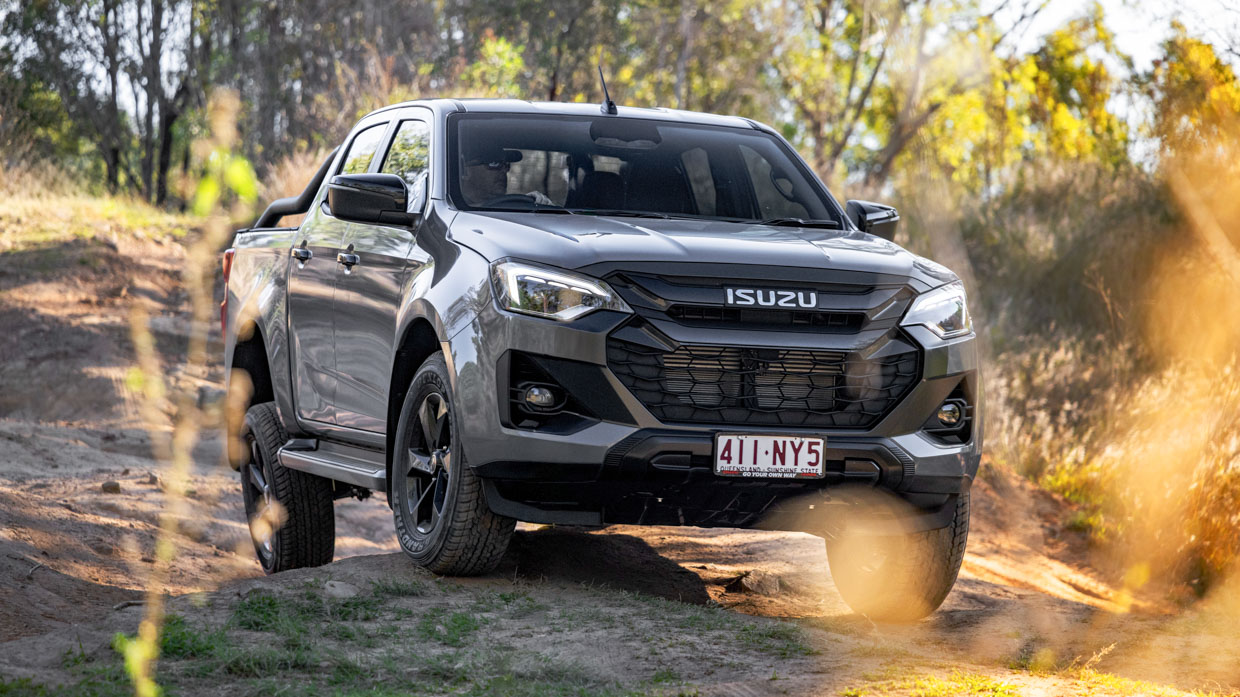
Thing is, Isuzu’s success has been based on its stalwart truck-sourced 3.0-litre four-cylinder turbo-diesel. Buyers would flock to it for its large displacement easy power, towing clout and solid reliability, and for some, an Isuzu without a 3.0L is like a front-engined Porsche 911… it just doesn’t seem right.
But to help it out of a tricky NVES hole, there’s a palpable sense Isuzu must entice buyers – fleet and private – into picking the 2.2L to bring down overall CO2 numbers. But key question for those considering a 120kW/400Nm downgrade from the 3.0L’s 140kW/450Nm, is the juice worth the 800cc squeeze?
It’s certainly a welcome boost over the old 1.9L’s 110kW/350Nm, and while we’re drinking at the positives fountain, a 2.2L variant versus the equivalent 3.0L is cheaper to buy, cheaper to run, its rated to tow the same 3500kg (the 1.9L only handled 3000kg), and you get a new eight-speed auto transmission (all manuals are now gone), while the bigger engine soldiers on with two cogs less.
The new eight-speed isn’t destined for the 3.0L, we’re told.
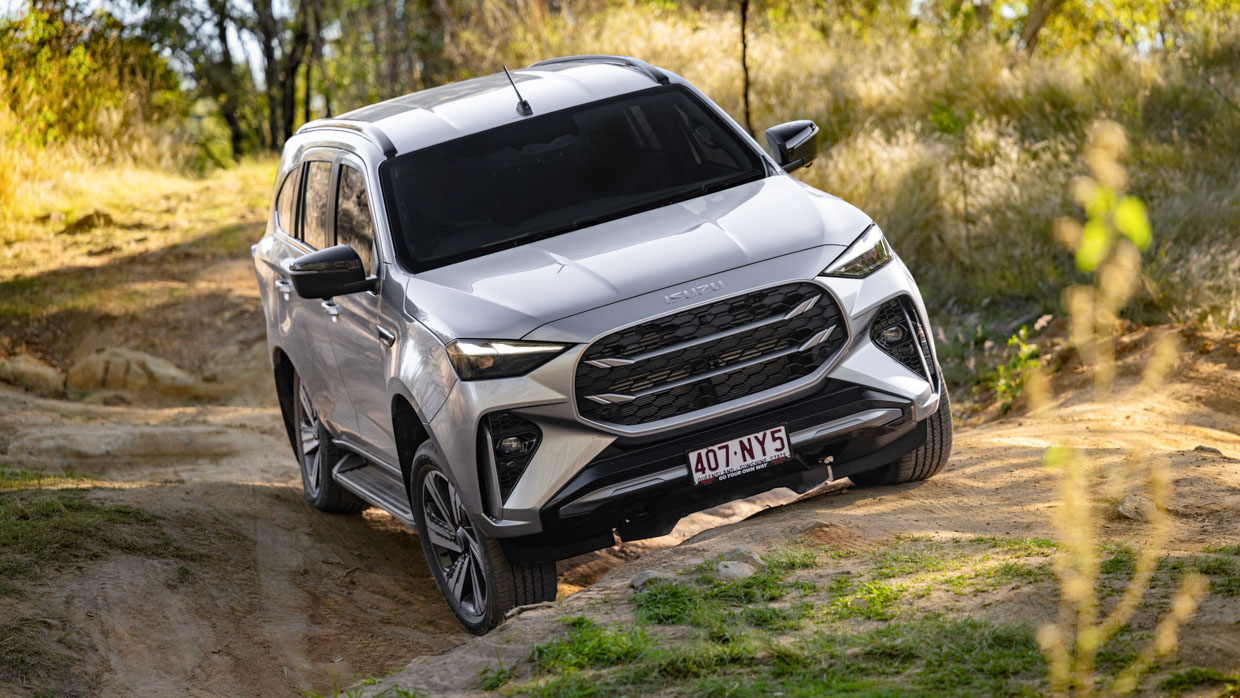
Prices? Typical of Isuzu, there’s a lengthy grade walk, and equally typical it offers drive-away pricing on select models which makes the rest of the line-up look over-priced.
Cheapest 2.2L D-Max is a 4×2 SX single cab for $36,990 on the road, while the 2.2L range topper D-Max 4×4 X-Rider Crew is $56,990 drive-away, despite a $59,500 RRP. Daft, we know.
Meanwhile, a 2.2L MU-X 4×2 LS-M is $48,990 drive-away, then the highest grade 2.2L MU-X 4×4 LS-T is $69,990 drive-away – both also below their RRP.
For comparison, these 2.2L variants are $2000 cheaper than the same grade 3.0L-equipped examples.
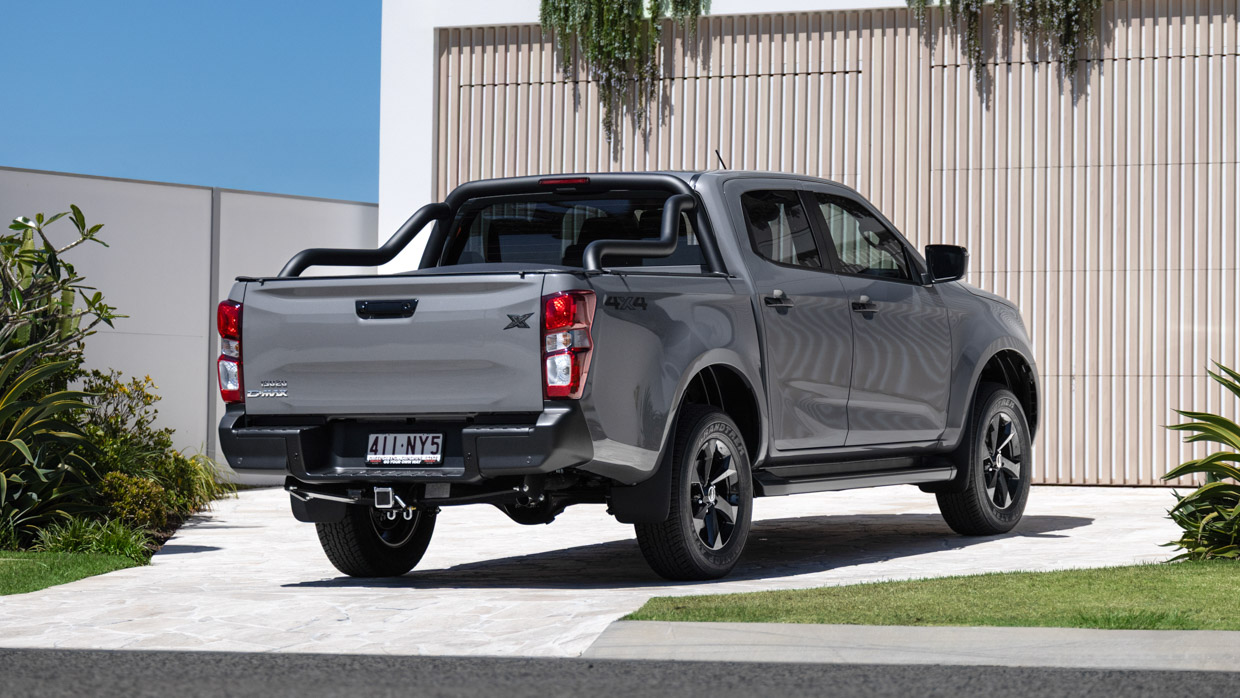
Here’s the full price list for the 2.2L and 3.0L line-up:
2.2L & 3.0L D-Max and MU-X Pricing (RRP before on-road costs):
D-Max
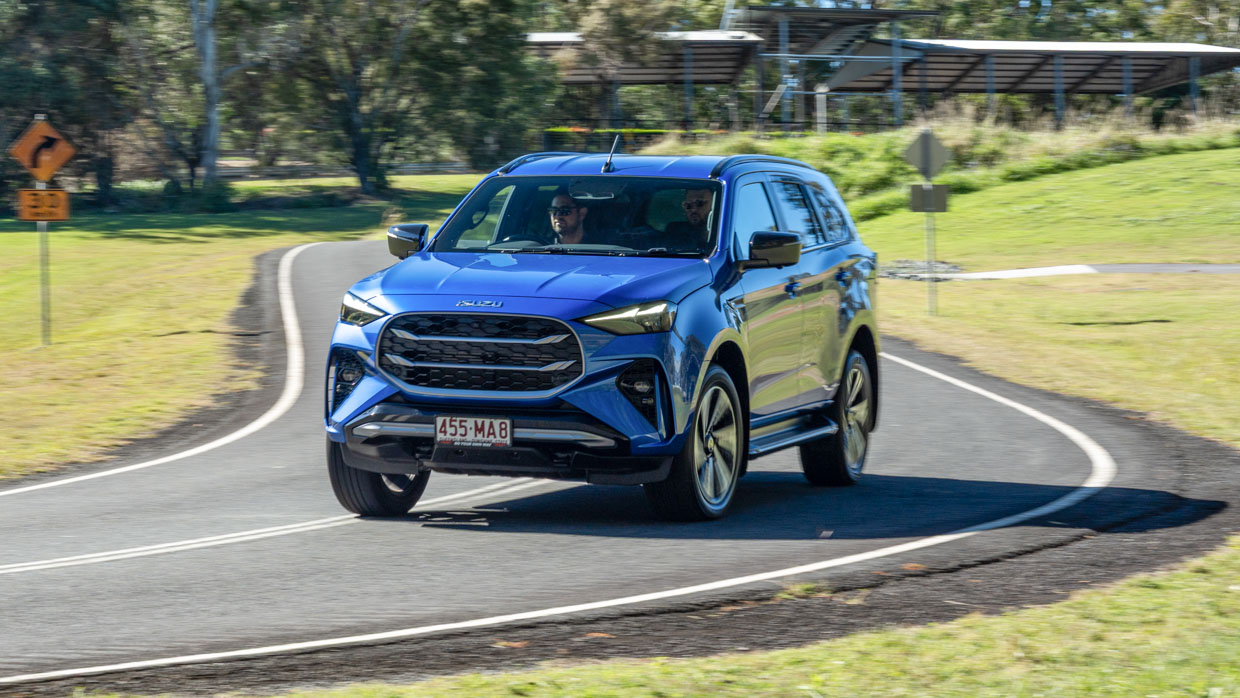
MU-X
At first try, the 2.2L appears a smart inbetweener. The old 1.9L suffered an image and guts crisis, while the 3.0L’s clout may be overkill for some users.
With a smart hat on, if you’re towing light loads, towing infrequently or not at all, the 2.2L makes solid sense. Especially so in the MU-X which, as a family seven-seater, may be used only for the school run or occasional adventurous weekend.
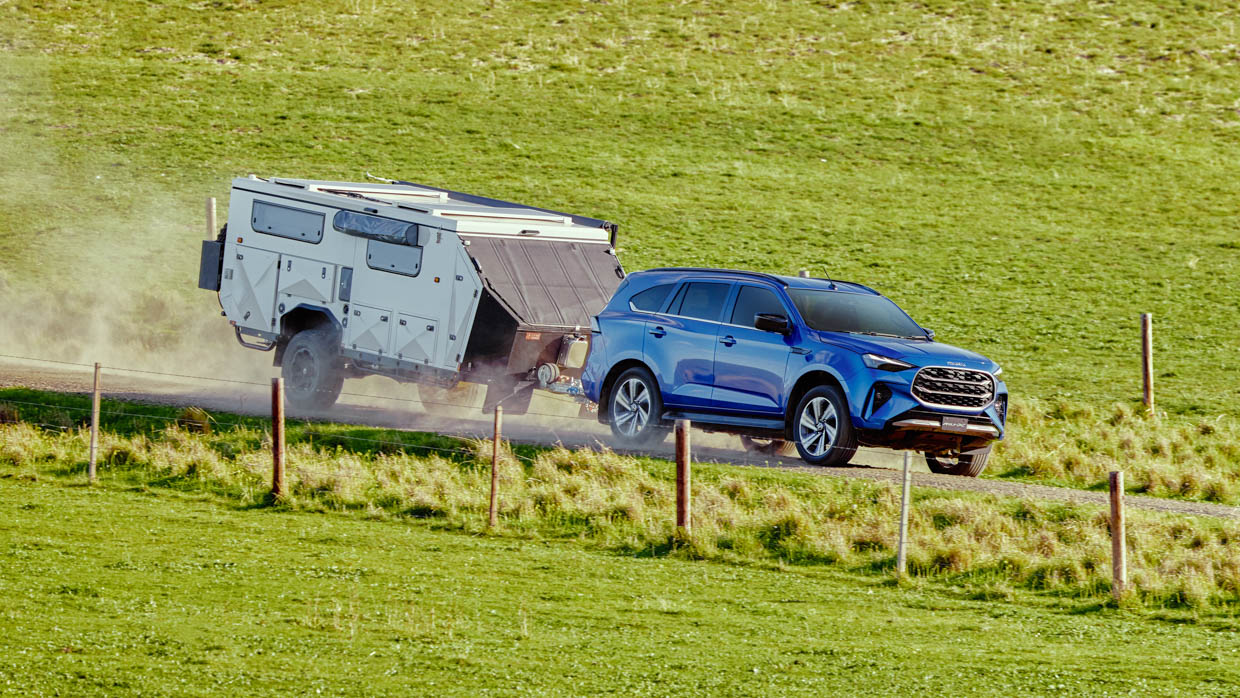
On the road, there’s the expected delayed response when first squeezing the throttle, but the 2.2L gives up solid torque from tiddly revs. The full 400Nm is there by 1600rpm, and you’re already gifted 255Nm at just above idle at 1000rpm… that’s a 60 per cent improvement over the old 1.9L.
It’s by no means a rapid engine, but where it shines is with an easy throttle, keeping revs in the torque sweet spot, and letting the eight-speed auto calmly go about its business. It’s all fairly slick, and unless you’re being heavy of shoe, the transmission’s barely noticed as it swaps cogs.
Same with the engine. In town and on the highway, the 2.2L shows no stress signs, and it feels barely different to the larger 3.0L. Pin the accelerator and it gets noisy and the gearbox a bit taken aback, but that’s hardly different to Isuzu’s larger motor.
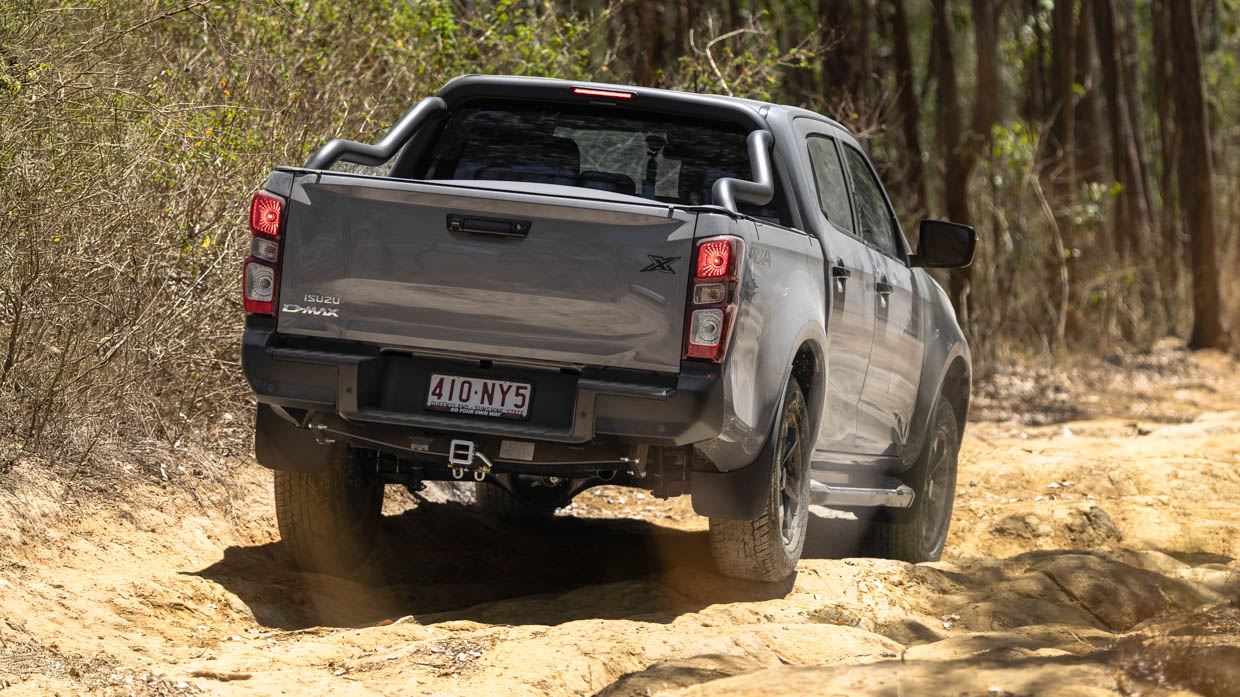
The engine must move an extra 100kg or so in the MU-X seven seater, and you feel that with each seat occupied, getting up to 110km/h won’t come quickly. Positively, the idle stop/start system is a decent one, firing the engine back up once you’re off the brake pedal or with a turn of the steering wheel. Even so, many users will just flick it off.
The D-Max is one of the better utes for ride comfort and control, especially with no load in the tub.
The X-Rider we tested features only three-leaf rear standard suspension (cab chassis models get heavy-duty three-leaf better suited to work trucks regularly carrying load) so it’s never too jiggly. But hop in the coil-sprung MU-X seven-seater and life is far comfier both on and off-road.
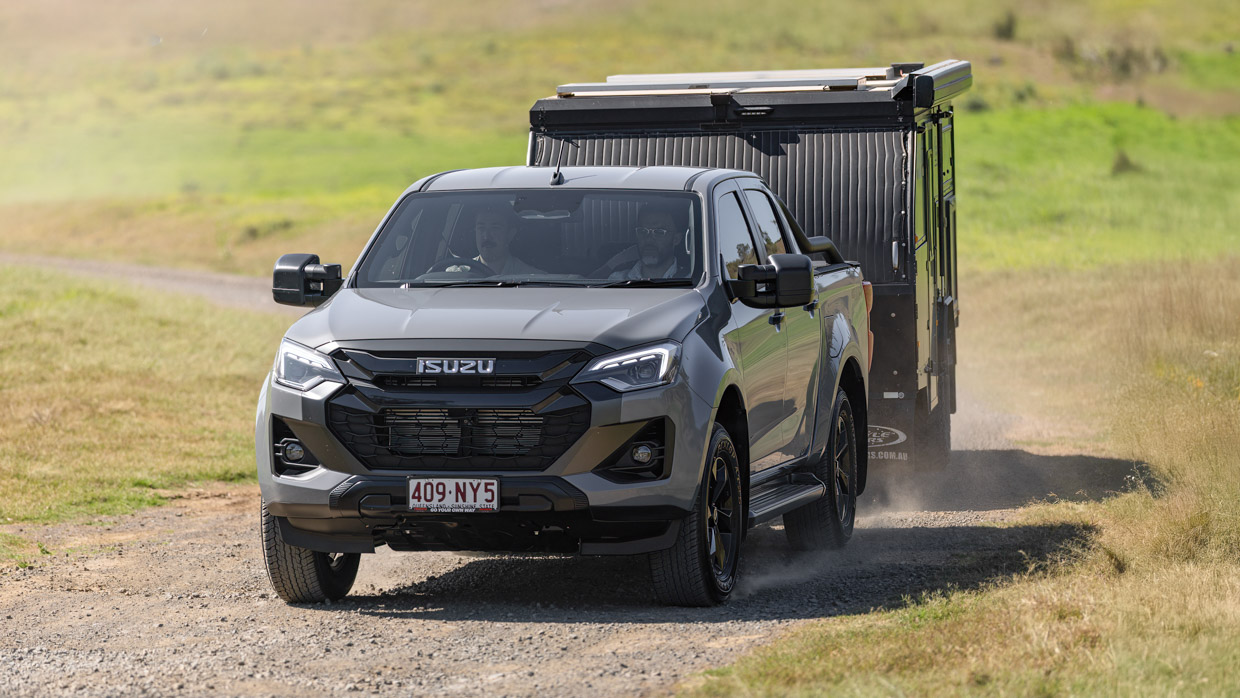
Next test was slinging a two-tonne caravan on the back of a 2.2L D-Max. The eight-speed ’box ensured the engine didn’t become a wail of flare, but it was clear the outright guts of a 3.0L was missing. Again, proper tow folk will still pick the larger displacement Isuzu motor.
Where the bigger Isuzu engine seemingly isn’t needed is for off-roading. We tackled a gnarly, dry dirt course with hefty holes, and as these 2.2-litre models still get the brand’s rear diff lock and impressive Rough Terrain Mode, both D-Max and MU-X performed their typical easy walk-over such obstacles.
Lumps of torque from low revs ensured very little throttle input was needed.
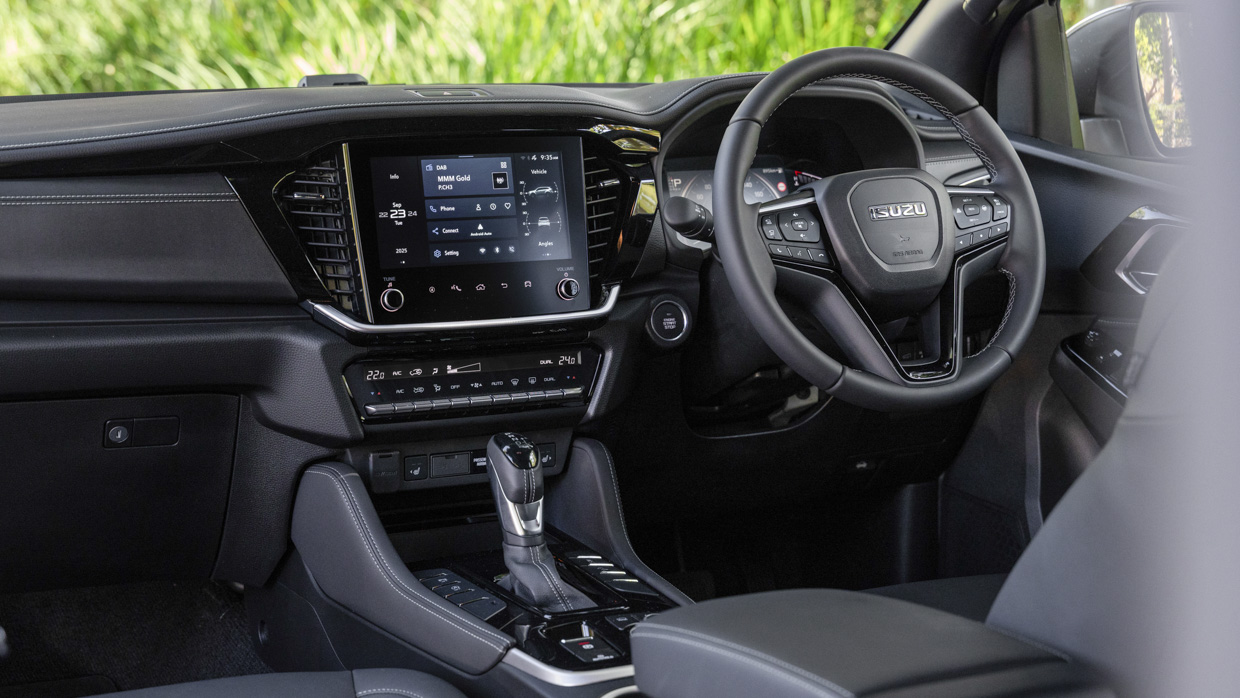
We’ve covered D-Max and MU-X drive and specs in other features which are worth a read, but it must be pointed out that the 2.2L D-Max models aren’t the plushest. If you want leather and more modern goodies, you must move into the likes of a 3.0L X-Terrain.
Showing (for now at least) these 2.2L D-Max models are aimed at fleets and those not dazzled by luxe, the range topper with this engine, the 4×4 X-Rider, still features very analogue climate control (no complaints there), a manual handbrake, metal key in the ignition and cloth seats.
There’s just two USB-C ports (one front, one rear), and while there’s wireless smartphone mirroring, there’s no wireless charging in the heavily plastic centre console.
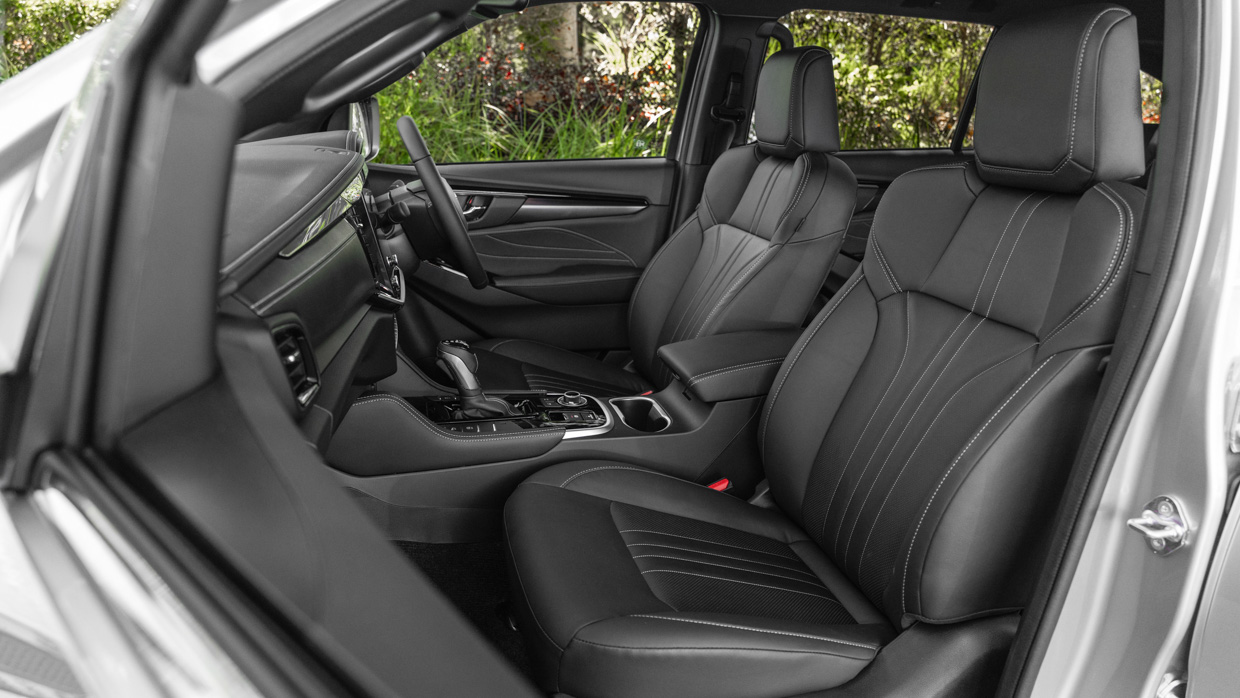
The family-friendly MU-X 2.2L 4×4 LS-T is fancier. It scores leather-accented seats, leatherette for door trims and the centre console, power and heated front chairs, ambient lighting, 360-degree monitor and remote engine start.
So, do you pick this new 2.2L or the old 3.0L? It will absolutely depend on intended use, and in how high a regard you hold Isuzu’s big block four-cylinder.
Financially it’s a bit close for comfort. An extra $2000 for the 3.0L isn’t a big jump, but the 2.2L has the dangling carrot of a more modern eight-speed gearbox, and better economy. Example numbers are 6.6L/100km vs 7.1L/100km (D-Max 4×4) and 6.7L/100km vs 7.6L/100km (MU-X 4×4). Not to be sniffed at if you plan on doing a lot of kilometres.
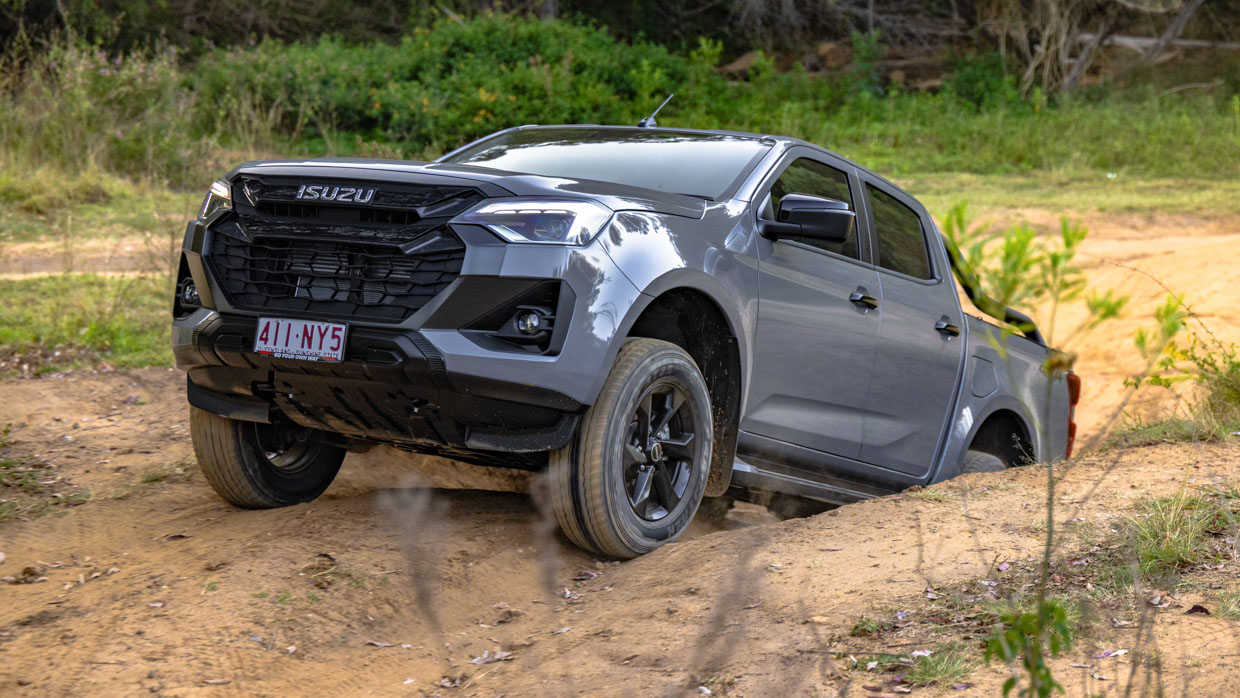
What may happen, as NVES fines increase, is greater financial penalty passed on to buyers of the 3.0L. Should that price difference move to, say, $4000 versus the 2.2L, the smaller engine looks way more appealing.
Those heavy towing should stick with the 3.0L for guts and known reliability, although the 2.2L being rated to 3500kg is impressive, and there’s a six-year warranty for peace of mind. Annual services are a reasonable $469 per visit for the first five years.
Isuzu buyers – and there are many of you – would be strongly advised to sample both engines. If the 2.2L feels like it offers enough for your use, on our first sample it appears a decent powertrain if your priority’s not mega power and torque numbers. It’s smooth and responsive and quiet unless really pushed. Our mixed test in the 4×4 X-Rider returned 8.3L/100km.
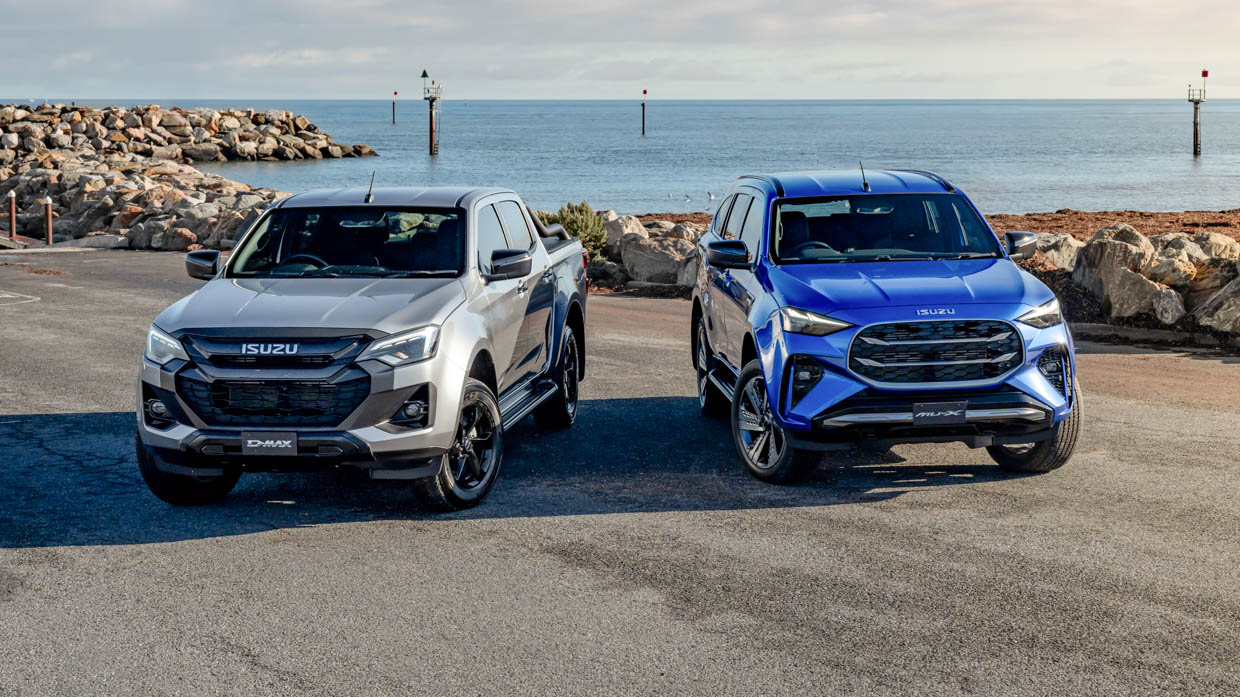
The 2.2L arguably makes most sense in the well-equipped MU-X LS-T seven-seater at under $70k on the road. But we can guess the 2.2L will ultimately find its way into higher grade D-Max utes too, broadening its appeal.
The great unknown is what comes next for Isuzu. Hybrid? Plug-in? Full EV? This 2.2L is only going to give brief respite against the ever-tightening grip of NVES, so the D-Max and MU-X line-up will likely look very different in the next couple of years.
About Chasing cars
Chasing Cars reviews are 100% independent.
Because we are powered by Budget Direct Insurance, we don’t receive advertising or sales revenue from car manufacturers.
We’re truly independent – giving you Australia’s best car reviews.
The estimate provided does not take into account your personal circumstances but is intended to give a general indication of the cost of insurance, in order to obtain a complete quote, please visit www.budgetdirect.com.au. Estimate includes 15%^ online discount.
^Conditions Apply
Budget Direct Insurance arranged by Auto & General Services Pty Ltd ACN 003 617 909(AGS) AFSL 241 411, for and on behalf of the insurer, Auto & General Insurance Company Limited(ABN 42 111 586 353, AFSL 285 571).Because we don’t know your financial needs, we can’t advise you if this insurance will suit you. You should consider your needs and the Product Disclosure Statement before making a decision to buy insurance. Terms and conditions apply.
Indicative quote based on assumptions including postcode , 40 year old male with no offences, licence suspensions or claims in the last 5 years, a NCD Rating 1 and no younger drivers listed. White car, driven up to 10,000kms a year, unfinanced, with no modifications, factory options and/or non-standard accessories, private use only and garaged at night.
^Online Discounts Terms & Conditions
1. Discounts apply to the premium paid for a new Budget Direct Gold Comprehensive Car Insurance, Third Party Property Only or Third Party Property, Fire & Theft Insurance policy initiated online on or after 29 March 2017. Discounts do not apply to optional Roadside Assistance.
2. Discounts do not apply to any renewal offer of insurance.
3. Discounts only apply to the insurance portion of the premium. Discounts are applied before government charges, taxes, levies and fees, including instalment processing fees (as applicable). The full extent of discounts may therefore be impacted.
4. We reserve the right to change the offer without notice.